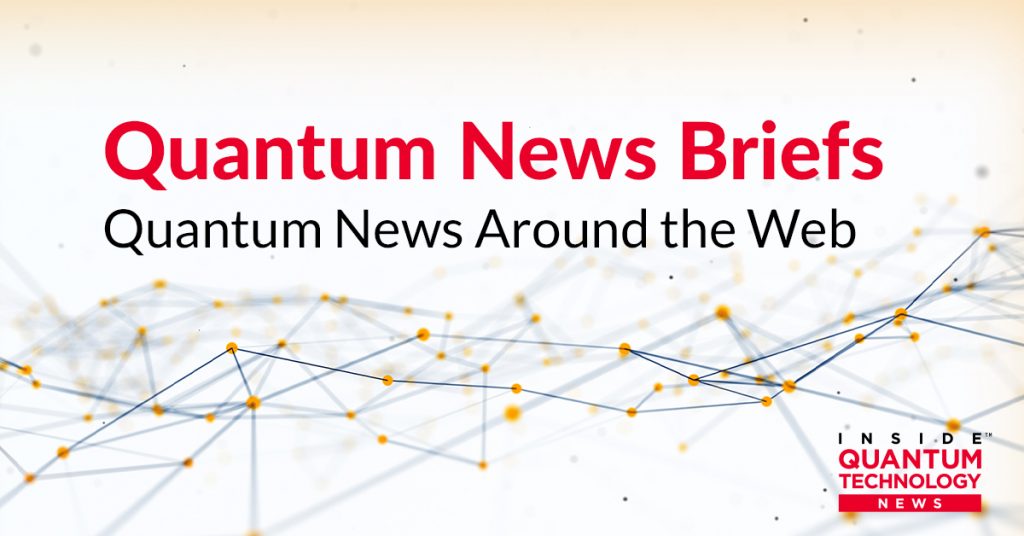Quantum News Briefs November 23 begins news of Leonardo HPC System, the fourth fastest supercomputer on Earth, and it’s built-in, quantum-ready capabilities; followed by details on the White House Office of Management & Budget beginning to push Federal post-quantum cryptography migration. Third is news from Russian scientists implementing two-qubit operation using superconducting fluxonium qubits + MORE.
*****
Leonardo, fourth fastest supercomputer on Earth, is quantum-ready
Leonardo was built as part of The European High Performance Computing Joint Undertaking (EuroHPC JU). With co-funding from the EU and several member states, the group’s ultimate goal is to build the world’s fastest supercomputer bar none
What’s arguably most interesting about Leonardo is that it was apparently designed with upgradability in mind. Earlier this year the EuroHPC laid out future-facing plans involving quantum processing upgrades for its existing supercomputers.
Leonardo is also slated for quantum upgrades. Per the EuroHPC, Italian non-profit computing consortium Cineca will manage a new quantum computer on behalf of EuroHPC JU starting in 2023.
Leonardo is built on architecture designed and developed by French high performance computing company Atos. It’ll officially go online and start solving problems on the 24th of November 24.
Leonardo’s specific architecture, called MSA (Modular Supercomputing Architecture), allows it to be physically connected to a quantum computer through a wired network through an integration called “co-localization.” That’s a form of hybrid quantum supercomputing that allows the two separate compute architectures to communicate at high enough speeds to share information loads.
What this means for Europe is exactly what we’ve been saying all along here at Neural: the European quantum computing sector is poised for massive growth.
Click here to read Neural article in-entirety.
*****
White House begins to push Federal post-quantum cryptography migration
According to a statement OMB sent to Nextgov, the migration to post-quantum cryptographic standards will be the most significant to date, and take several years to complete. Within one year of this new memo’s publication, CISA will help release new strategies for migration, in conjunction with the National Institute of Standards and Technology and the National Security Agency.
OMB recommended that as they inventory their information systems, federal agencies should collaborate with software vendors to identify post quantum cryptography testing opportunities within their networks, speaking to the Biden administration’s push for public-private sector collaboration.
Preparatory measures the OMB recommends federal entities follow the lead of President Joe Biden’s earlier executive order enhancing the U.S.’s cyber defense posture. The new memo establishes requirements for federal agencies to inventory their current cryptographic hardware and software systems, emphasizing high value assets and high impact systems that demand extra cybersecurity protocols.
Agency leadership will then be tasked with compiling this information in a report containing their individual summaries on higher risk information assets and systems for the Office of the National Cyber Director and Cybersecurity and Infrastructure Security Agency to help budget, plan, and execute the transition from standard to effective post-quantum cryptography. Click here to read article in-entirety.
*****
Russian scientists implement two-qubit operation using superconducting fluxonium qubits
Fluxoniums have a longer life cycle and a greater precision of operations, so they are used to make longer algorithms. An article on research that brings the creation of a quantum computer closer to reality has been published in npj Quantum Information.
“Fluxonium qubits are more complex and less studied than transmons. The main advantage of fluxoniums is that they can be operated at a low frequency of about 600 MHz. We know that the lower the frequency, the longer the lifetime of qubits, which means that more operations can be performed with them. During the tests, it turned out that the dielectric losses of fluxonium qubits allow to keep the state of the superposition longer than that of transmons,” said Ilya Besedin, one of the authors of the study, an engineer of the scientific project at the NUST MISIS Superconducting Metamaterials laboratory.
The obtained results reveal an interesting and promising approach toward fault-tolerant quantum computing with low-frequency qubits that can be a good alternative to the transmon system. Read original Phys.org article by clicking here.
*****
UPenn Researchers create a chip that outstrips the security & robustness of existing quantum communications hardware
Their technology communicates in “qudits,” doubling the quantum information space of any previous on-chip laser.
Liang Feng, Professor in the Departments of Materials Science and Engineering (MSE) and Electrical Systems and Engineering (ESE), along with MSE postdoctoral fellow Zhifeng Zhang and ESE Ph.D. student Haoqi Zhao, debuted the technology in a recent study published in Nature. The group worked in collaboration with scientists from the Polytechnic University of Milan, the Institute for Cross-Disciplinary Physics and Complex Systems, Duke University and the City University of New York (CUNY).
“The biggest challenge,” says Zhang, “was the complexity and non-scalability of the standard setup. We already knew how to generate these four-level systems, but it required a lab and many different optical tools to control all the parameters associated with the increase in dimension. Our goal was to achieve this on a single chip. And that’s exactly what we did.”
This additional level of control—being able to manipulate and couple OAM and spin—is the breakthrough that allowed them to achieve a four-level system. The difficulty of controlling all these parameters at once is what had been hindering qudit generation in integrated photonics and represents the major experimental accomplishment of the team’s work.
“There is a lot of concern,” says Feng, “that mathematical encryption, no matter how complex, will become less and less effective because we are advancing so quickly in computing technologies. Quantum communication’s reliance on physical rather than mathematical barriers make it immune to these future threats. It’s more important than ever that we continue to develop and refine quantum communication technologies.” Click here to read EurekaAlert in-entirety.
*****
Sandra K. Helsel, Ph.D. has been researching and reporting on frontier technologies since 1990. She has her Ph.D. from the University of Arizona.
